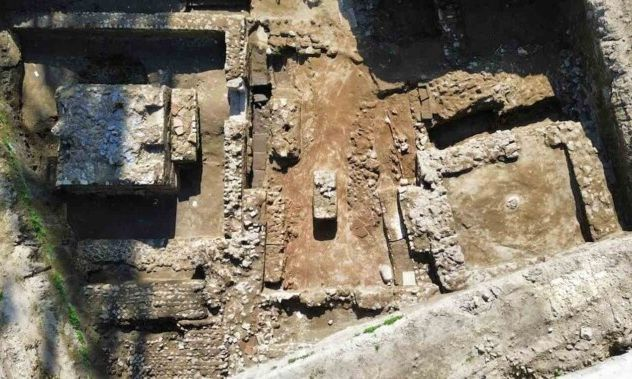In his lecture – titled ‘A Historical View of Vindhyan Rock Art and its Significance’ – at India International Centre on 26 September 2022, Dr Pratap said there is too much tourism in the Sonbhadra region.
The protection and conservation protocols, required for such prehistoric rock art sites, have not been extended to this region. (Photo source: Raju Mansukhani)
By Raju Mansukhani
It was a clarion call by Dr Ajay Pratap, professor of history from Banaras Hindu University, to protect several rock art sites along the Vindhya ranges which could give our country another World Heritage Site.
In his lecture – titled ‘A Historical View of Vindhyan Rock Art and its Significance’ – at India International Centre on 26 September 2022, Dr Pratap said there is too much tourism in the Sonbhadra region. Prehistoric rock art sites of Likhaniya Dari, Chuna Dari, Morhana Pahar and Wyndham Falls, for example, are in grave danger. The protection and conservation protocols, required for such prehistoric rock art sites, have not been extended to this region.
To a diverse audience of historians, archaeologists, artists and scholars, the lecture utilised Google Earth Maps to help visualise the Vindhyan Highlands, mainly south of the river Ganga, where the rock art dates from c 10,000 BC onwards. “We are talking about over 250 human settlements spread across the regions from Mirzapur district to Sasaram; these people were hunting, foraging and fishing aeons ago,” he explained.
Dr Pratap, as the veteran archaeologist-scholar Dr B M Pande said in his introduction, studied ethno-archaeology in the University of Cambridge in the early 1980s, later working at the Indira Gandhi National Centre for the Arts before becoming a part of the BHU faculty.
In several research papers, Dr Pratap highlighted that if conserved properly, the Vindhyas may “well give us a World Heritage Site other than Bhimbetka, as the rock art here is at 250 locations and copious archaeological data, far greater than Bhimbetka, is found associated with the rock art.”
The Vindhyan range here, which is a series of discontinuous hills, valleys and plateaus, drained by several rivers like the Son, Betwa, Ken, Belan and numerous ephemeral streams and waterfalls, is located roughly south-southeast of Varanasi.
The Vindhyas extend all the way up to the river Son, in the east, and in the south up to Rewa in Madhya Pradesh, and in the west up to Allahabad. “We have evidence of prehistoric as well as historic rock imagery, and also its association with significant archaeological material,” he said.
In Sonbhadra division (erstwhile Mirzapur division), at Likhaniya the painted site is located at the very end of a distant waterfall, and is easily approachable from the Mirzapur-Robertsganj road. As the name Dari suggests, this painted site is located along the course of a drainage line of a mountain-fed stream known locally as the Garai river. “There is one painted panel which we estimate has been painted continuously from Prehistory to the Historic period and contains upwards of fifty painted icons,” he said.
Dr Pratap presented fascinating examples of community hunts, flora and fauna details, basic human and animal shapes, geometric patterns and, what can best be understood, as doodles and drawings made by children at the bottom of the rocks! He was cautious that “we cannot dig too deep, searching for meanings, into this rock art imagery.” The images were digitally enhanced for our benefit.
The painting of a woman’s open palm could be interpreted in several ways. Though the Professor felt it was a simple demonstration of mehendi art coming down through the millennia.
What took the breath away were the elaborate paintings of the hunts, where we could see the men armed with weaponry, moving purposefully to defeat their enemies. Rock art, as Dr Pratap said, is now being studied as historical records; these sites cannot be left unprotected and uncared for.







